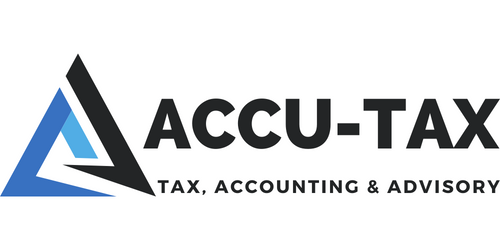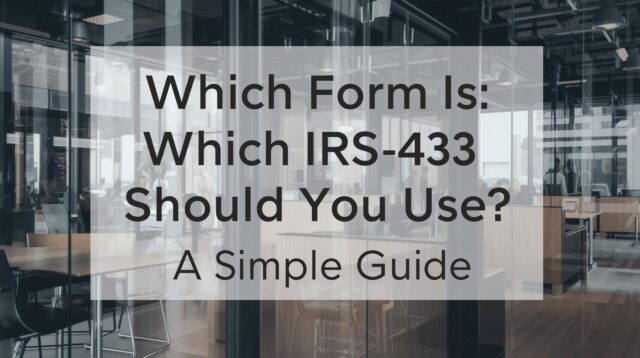Which IRS Form 433 Should You Use? A Simple Guide
When you owe the IRS and need to resolve your tax debt, you may be asked to complete a Collection Information Statement (CIS). The IRS uses several versions of Form 433 to collect your financial information, and choosing the correct one is crucial for a smooth resolution. Here’s how to determine which form you need, what each is for, and the latest requirements as of 2024.
- Form 433-A: Collection Information Statement for Wage Earners and Self-Employed Individuals
Purpose:
Form 433-A is the most comprehensive CIS and is used to provide a detailed picture of your finances. It is required in the following scenarios:
- When working directly with an IRS Revenue Officer (field collection)
- When applying for certain installment agreements (especially if you owe more than $50,000 or cannot pay within 72 months)
- When seeking a Partial Payment Installment Agreement (PPIA)
- When submitting an Offer in Compromise (OIC) based on doubt as to collectibility (but see 433-A (OIC) below)
Who Should Use It:
- Individuals (wage earners or self-employed) with complex financial situations
- Taxpayers with higher balances due, or those who cannot resolve their debt through streamlined processes
- Taxpayers required to provide full financial disclosure to a Revenue Officer
Key Features:
- Requires detailed information on income, expenses, assets (including real estate, vehicles, investments, virtual currency, and business assets)
- Must include supporting documentation (bank statements, pay stubs, proof of expenses, etc.)
- Must use the most current IRS Collection Financial Standards for allowable expenses (see below)
- Both spouses must sign if the liability is joint
Recent Updates:
- The IRS has updated the National Standards for allowable living expenses (food, clothing, housing, transportation, health care) as of April 2023. These standards must be used unless you can substantiate higher actual expenses [1].
- Virtual currency holdings must be disclosed.
- The form is required for PPIAs and for OICs (unless using 433-A (OIC)) [2].
- Form 433-A (OIC): Collection Information Statement for Offer in Compromise
Purpose:
This is a specialized version of 433-A, used exclusively when submitting an Offer in Compromise (OIC) based on doubt as to collectibility or effective tax administration.
Who Should Use It:
- Individuals (wage earners or self-employed) submitting an OIC to settle their tax debt for less than the full amount owed
Key Features:
- Tailored to the OIC process, focusing on the information needed to determine your reasonable collection potential
- Requires disclosure of all assets, income, and expenses, similar to 433-A, but formatted for OIC review
- Must include supporting documentation
- Must use current IRS Collection Financial Standards
Recent Updates:
- The IRS continues to require the most current version of the form and supporting documentation.
- The OIC process is distinct from installment agreements; do not use 433-A (OIC) for payment plan requests [3].
- Form 433-F: Collection Information Statement
Purpose:
Form 433-F is a simplified CIS used primarily for streamlined installment agreements and in situations where a full 433-A is not required.
Who Should Use It:
- Individuals seeking a streamlined installment agreement (generally if you owe $50,000 or less and can pay within 72 months)
- Taxpayers working with the IRS Automated Collection System (ACS) or applying for payment plans online or by phone
- Taxpayers responding to IRS notices (not working with a Revenue Officer)
Key Features:
- Shorter and less detailed than 433-A
- Focuses on basic income, expenses, and asset information
- May be required if you cannot pay the minimum payment under a streamlined agreement, or if you owe more than $50,000 but less than $250,000 and are seeking a payment plan
- Supporting documentation may be requested
Recent Updates:
- The threshold for streamlined agreements is $50,000 or less (must pay within 72 months or before the Collection Statute Expiration Date, whichever is less) [2].
- If you owe more than $50,000, you must complete and submit Form 433-F to be considered for an installment agreement.
- For balances above $25,000 but not more than $50,000, direct debit or payroll deduction is required for streamlined processing.
- Form 433-H: Installment Agreement Request and Collection Information Statement
Purpose:
Form 433-H is used for requesting a long-term payment plan (installment agreement) for individuals with higher balances due (over $50,000 up to $250,000) who cannot pay within 72 months.
Who Should Use It:
- Individuals who owe between $50,000 and $250,000 and are seeking a payment plan longer than 72 months, or who cannot meet the minimum payment for a streamlined agreement
- Taxpayers who do not qualify for streamlined or guaranteed installment agreements
Key Features:
- Combines the installment agreement request with a financial statement
- Requires detailed information about income, expenses, and assets
- Supporting documentation is required
Recent Updates:
- The IRS now allows some taxpayers with balances up to $250,000 to apply for payment plans without submitting a CIS if they agree to direct debit and can pay within the CSED, but Form 433-H may be required if you cannot meet those terms [2].
When to Use Each Form: Quick Reference
| Scenario | Use Form |
| Working with a Revenue Officer | 433-A |
| Submitting an Offer in Compromise | 433-A (OIC) |
| Applying for a streamlined installment agreement ($50,000 or less, 72 months or less) | 433-F |
| Applying for a payment plan over $50,000 (up to $250,000), or cannot pay within 72 months | 433-H |
| Partial Payment Installment Agreement (PPIA) | 433-A |
| Automated Collection System (ACS) or online payment plan | 433-F |
| Supporting a request for Currently Not Collectible status | 433-A or 433-F (as directed by IRS) |
Supporting Documentation and IRS Collection Financial Standards
- Documentation: Always include recent pay stubs, bank statements, proof of expenses (rent/mortgage, utilities, insurance, etc.), and statements for all assets and debts. The IRS may request additional verification after review [1].
- Collection Financial Standards: Use the latest IRS National and Local Standards for allowable living expenses. As of April 2023, these standards have been updated. If you claim higher expenses, you must provide substantiation.
- Virtual Currency: All forms now require disclosure of virtual currency holdings.
Best Practices for Completion
- Be thorough and accurate: Incomplete or inaccurate forms can delay your case or result in denial.
- Use the latest forms: Always download the most current version from IRS.gov.
- Attach all required documentation: Missing documents are a common reason for processing delays.
- Follow IRS standards: Use the IRS Collection Financial Standards for expenses unless you can prove higher actual costs.
- Signatures: For joint liabilities, both spouses must sign.
- Consult a tax professional: If your situation is complex, professional guidance can help avoid errors and maximize your chances of approval.
Recent Changes and Reminders (2024)
- Streamlined installment agreement threshold remains at $50,000. Direct debit is required for balances above $25,000.
- For balances above $50,000, a CIS (433-F, 433-A, or 433-H) is required.
- Partial Payment Installment Agreements (PPIA) require a full financial statement (433-A) and are subject to periodic review.
- OICs require Form 433-A (OIC), not the standard 433-A.
- IRS Collection Financial Standards were updated in April 2023.
- Virtual currency must be disclosed on all forms.
Summary
- Form 433-A: Most detailed; for Revenue Officer cases, PPIA, and complex situations.
- Form 433-A (OIC): For Offers in Compromise only.
- Form 433-F: Shorter; for streamlined agreements and ACS/online cases.
- Form 433-H: For higher-balance, long-term installment agreements.
Always check the latest IRS instructions and contact us if you are unsure which form to use or how to complete it.
References:


